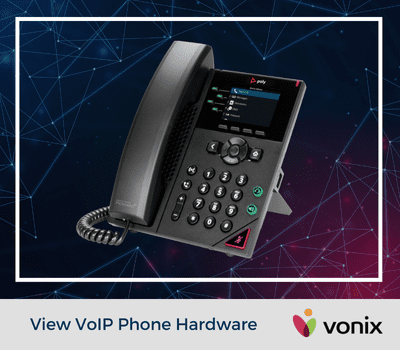Decoding Business Phone System Cost: A Comprehensive Guide
Navigating the complexities of business phone system cost can be daunting. With a myriad of options and sometimes hidden fees, it’s essential to understand the factors that impact your overall expenditure. Let’s break down the components of a business phone system and explore how to optimize your budget.
Hardware vs. Service
Your business phone system primarily comprises two key elements: hardware (or software) and phone service.
Hardware:
-
- VoIP Desk Phones: If you like having a physical phone on your desk, VoIP phone hardware may be the right choice. This is best for a business that requires crystal-clear quality and the ability to pick up calls from multiple locations throughout an office. Also, if your team uses headsets, business phone hardware can be the right choice. These versatile devices, compatible with various providers, offer features like HD voice quality, remote work capabilities, and power-over-Ethernet. Popular brands include Polycom and Yealink. Check out our hardware to see the latest models.
- VoIP Softphones: Software-based phone systems that eliminate the need for physical hardware, making them ideal for remote workers. They can be installed on any device and work over a wireless internet or data connection. Ideal for work-from-home or employees on the go, VoIP phone software can also save on the business phone system cost overall by eliminating costs for hardware. Schedule a meeting with one of our experts to a softphone in action.
Understanding Business Phone System Cost with VoIP Service
The monthly business phone system cost is based on the number of users, not the number of phone lines, as in traditional systems. The cost of a business phone system with VoIP service can vary significantly depending the number of users, the specific features required, and the chosen provider. Generally, VoIP phone systems offer a cost-effective solution compared to traditional landline systems. The ongoing monthly fees for VoIP service are typically lower than traditional phone lines.
Hidden Costs and Fees
Be wary of hidden costs that can significantly impact your budget:
- Regulatory Recovery Fees: These are optional, additional fees that some providers charge to recover costs for regulatory compliance. Often, these “fees” are not included on the quote, but can increase service costs significantly.
- Taxes and FCC Fees: Government-imposed taxes and fees can add up, so it’s crucial to inquire about these costs upfront.
- Installation Fees: Some providers may charge for installation, while others offer complimentary setup.
Vonix offers clear, straight-forward pricing with no regulatory recovery fees.
Avoiding surprises with the overall business phone system cost
To make informed decisions and maximize your budget, consider the following:
- Compare Providers: Research different providers to find the best fit for your business needs and budget.
- Consider Customer Support: Make sure your provider offers top-notch, white-glove customer support to avoid costly hours on hold.
- Prioritize Features: Determine the essential features you require and choose a plan that aligns with your needs.
- Consider Long-Term Costs: Factor in potential future growth and scalability when selecting a provider.
- Leverage Demos: Take advantage of demos and free trials to assess if the provider’s platform meets your needs.
By understanding these key factors, you can make informed decisions to optimize your business phone system and allocate your budget effectively.










